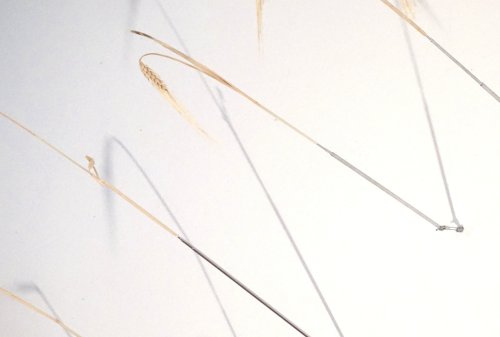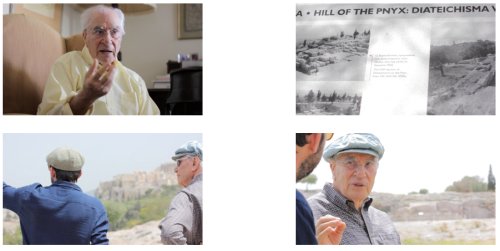Gilles Aubry
Youssef Tabti
Eröffnung: Freitag, 24.11.2017, 19 Uhr
Ausstellung: 24.11. – 26.11.2017
Öffnungszeiten: Sa – So, 16 – 18 Uhr

Gilles Aubry
Youssef Tabti
Eröffnung: Freitag, 24.11.2017, 19 Uhr
Ausstellung: 24.11. – 26.11.2017
Öffnungszeiten: Sa – So, 16 – 18 Uhr

Gilles Aubry
“The sickle and the antenna
(a communism of waves)”
The installation consists in an assemblage of barley plants and telescopic radio antennas, complemented by two loudspeakers.This ensemble transforms the exhibition room into a space of attunement to all kinds of waves and vibes, real or imaginary, in which the public is invited to
spend time considering new modes of collectivity beyond the human. By acknowledging the existence and agency of non-human voices – such as environmental, technological and spiritual ones – the work stresses the necessity to reimagine our ways of relating and our sense of the
collective.
The installation serves as an introduction to Aubry’s current researches in Morocco on sonic intimacy, sung poetry and relational ontology. Departing from a sound ethnography of daily life in rural areas, he becomes attentive to the specifc agency of non-human beings, things, tools, locations and devices, including his own microphone and recorder. Drawing on recent theories on natural radio, vibrant matter and sympoiesis, as much as on experimental sound practices, Aubry approaches radio as a model for the exploration of intimate, wireless, and interspecies
relations, and as a space for techno-environmental speculation. Sound bits from the research are published regularly on the Wretched Ear Radio channel on the internet www.earpolitics.net/projects/wretched-earradio/), and presented as part of the installation
soundtrack.

Gilles Aubry
“and who ears the desert”
Twelve LP records are presented in the exhibition space, available for playback on three turntables. The LPs are faulty copies of Aubry’s latest music publication “and who sees the mystery” on Corvo records, which have been further processed during a residency in Tighmert, an oasis in the south-west of Morocco. While the audio content on the original record is made of electroacoustic experiments with sound-check recordings of traditional Berber-Amazigh music instruments, the record surfaces have been physically altered by using found objects in the oasis in collaboration with several moroccan artists. Each record has become a unique sound object bearing the material traces of the manipulations by the artists, which are also documented in the installation through a series of photographs. By returning the records to Morocco after their industrial manufacturing in Germany, the work questions the circulation of, access to, and authorship of cultural goods in the global context of cultural extraction, folklorization and commodifcation.
With artistic contributions by: Mohamed Arejdal, M’barek Bouhchichi, Dounia Fikri and Lotf Souidi.

Youssef Tabti
“RHETORIC – Hill of the PNIX”
2017, Video
RHETORIC – Hill of the PNIX bildet den Abschluss von Youssef Tabtis
Istanbul-Trilogie. Die Arbeit kreist um das Thema Redefreiheit und Demokratie. Die
ersten beiden Teile des Werkes konnte der Künstler in Istanbul selbst realisieren.
Das im Künstlerhaus ausgestellte Video bildet den dritten Teil der Trilogie. Nach
dem Putschversuch von 2016 musste Tabti das Projekt ins Nachbarland Griechenland
verlegen. Er fand in Athen mit Christos Yannaras einen Theologen, der mit seinen
Thesen nicht nur in Griechenland umstritten ist. Inmitten der Pnix, dem Ort der
Volksversammlungen im antiken Athen, erinnert Yannaras uns an die rhetorische Kunst
der Demokratie und sensibilisiert uns dadurch für die Gefährdung der
Meinungsfreiheit in der heutigen Zeit.
In Kooperation mit der Kulturakademie Tarabya und dem Goethe-Institut Istanbul